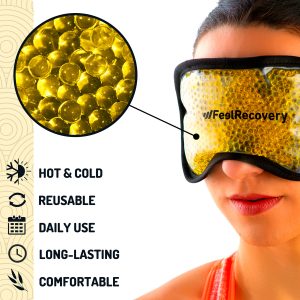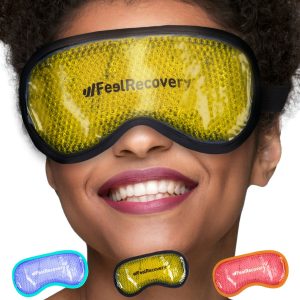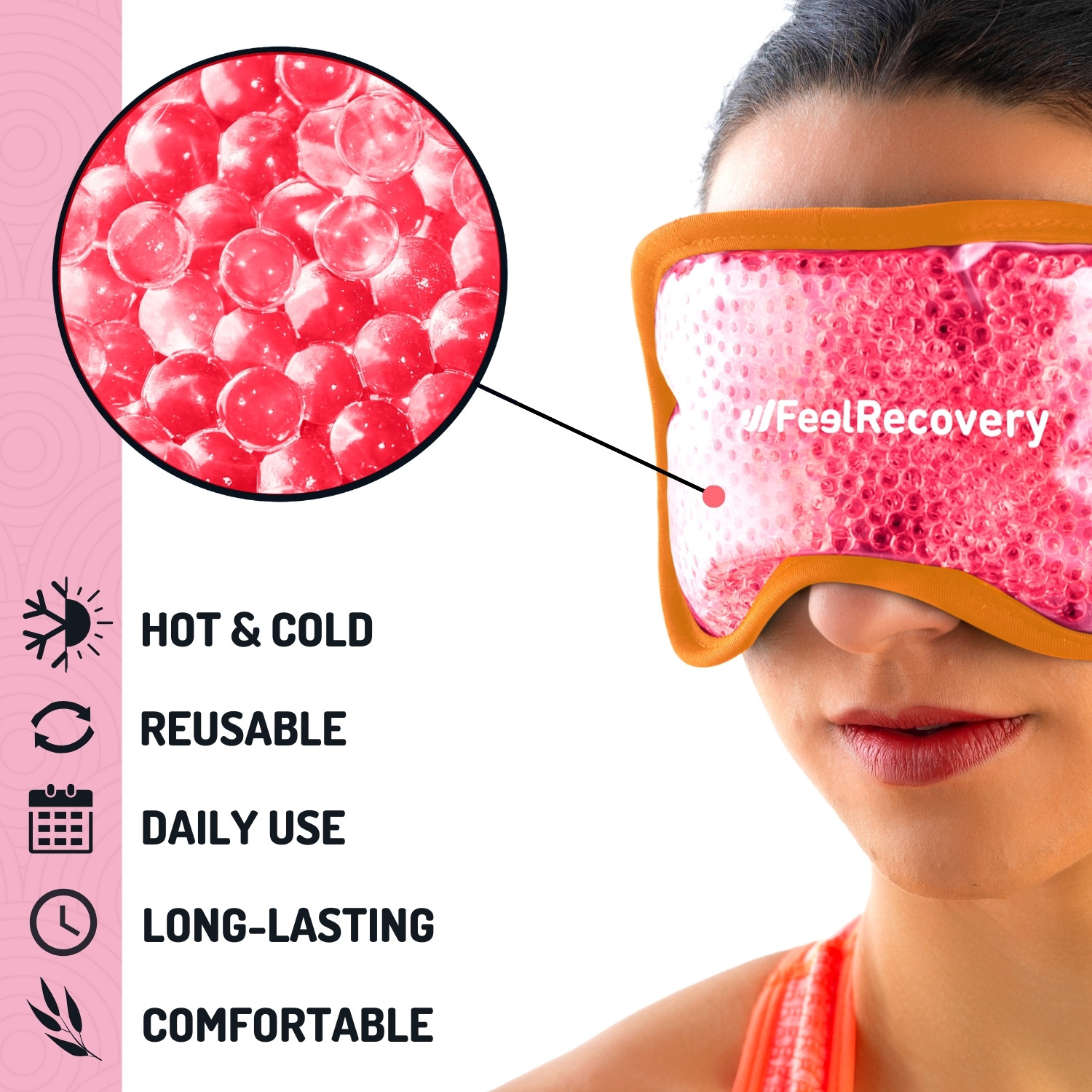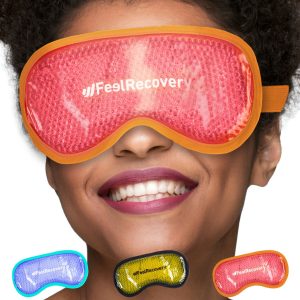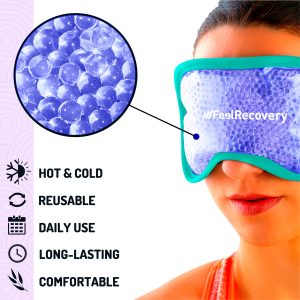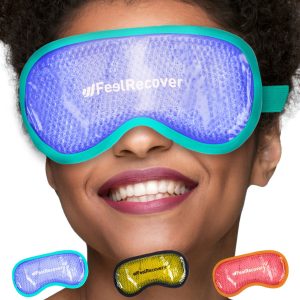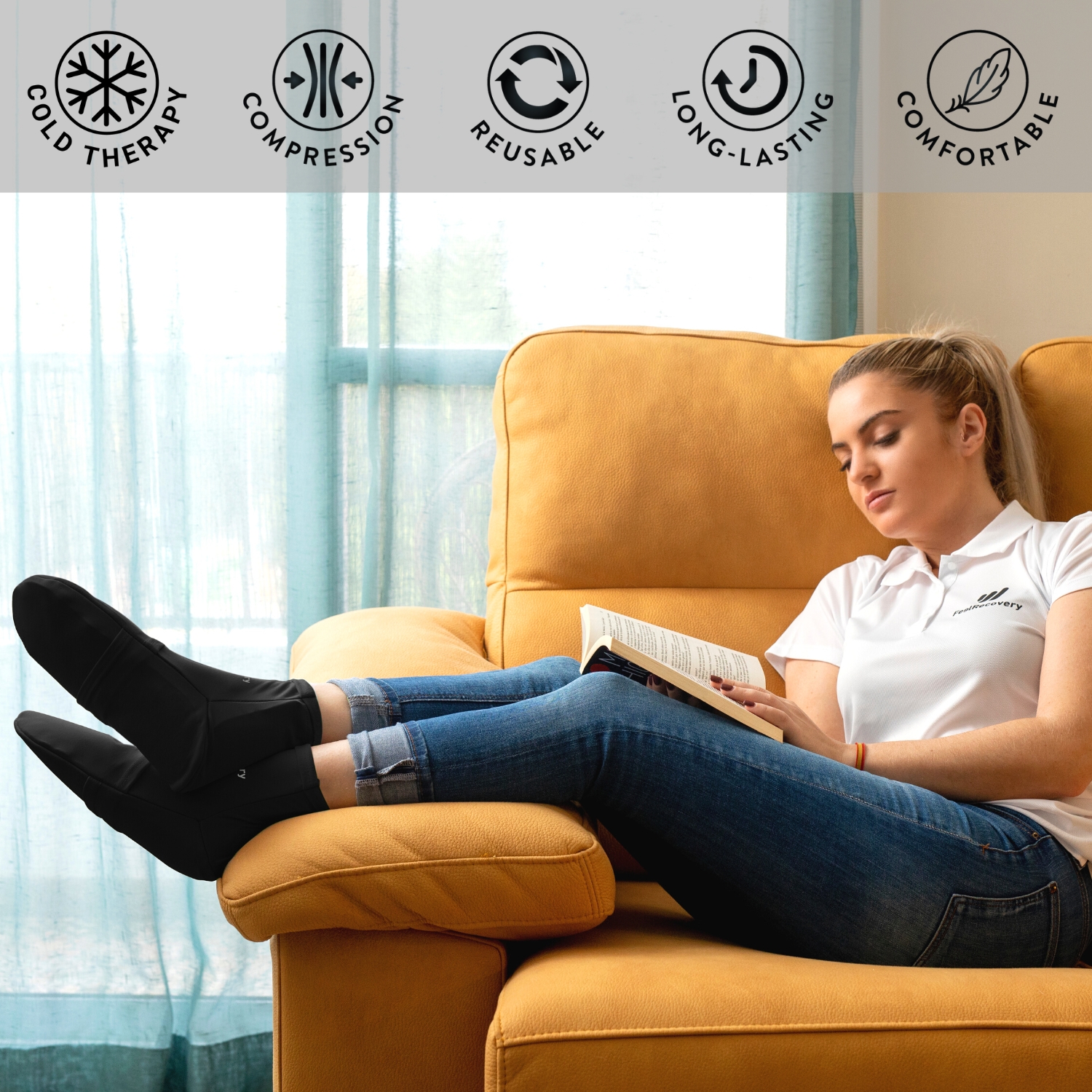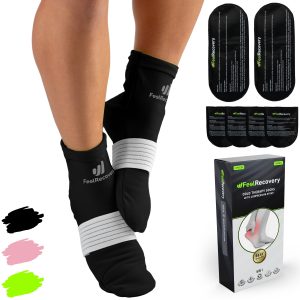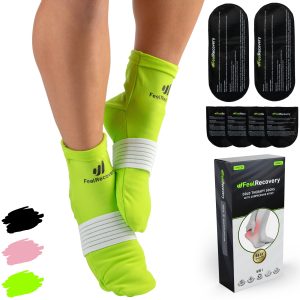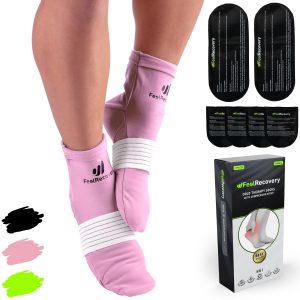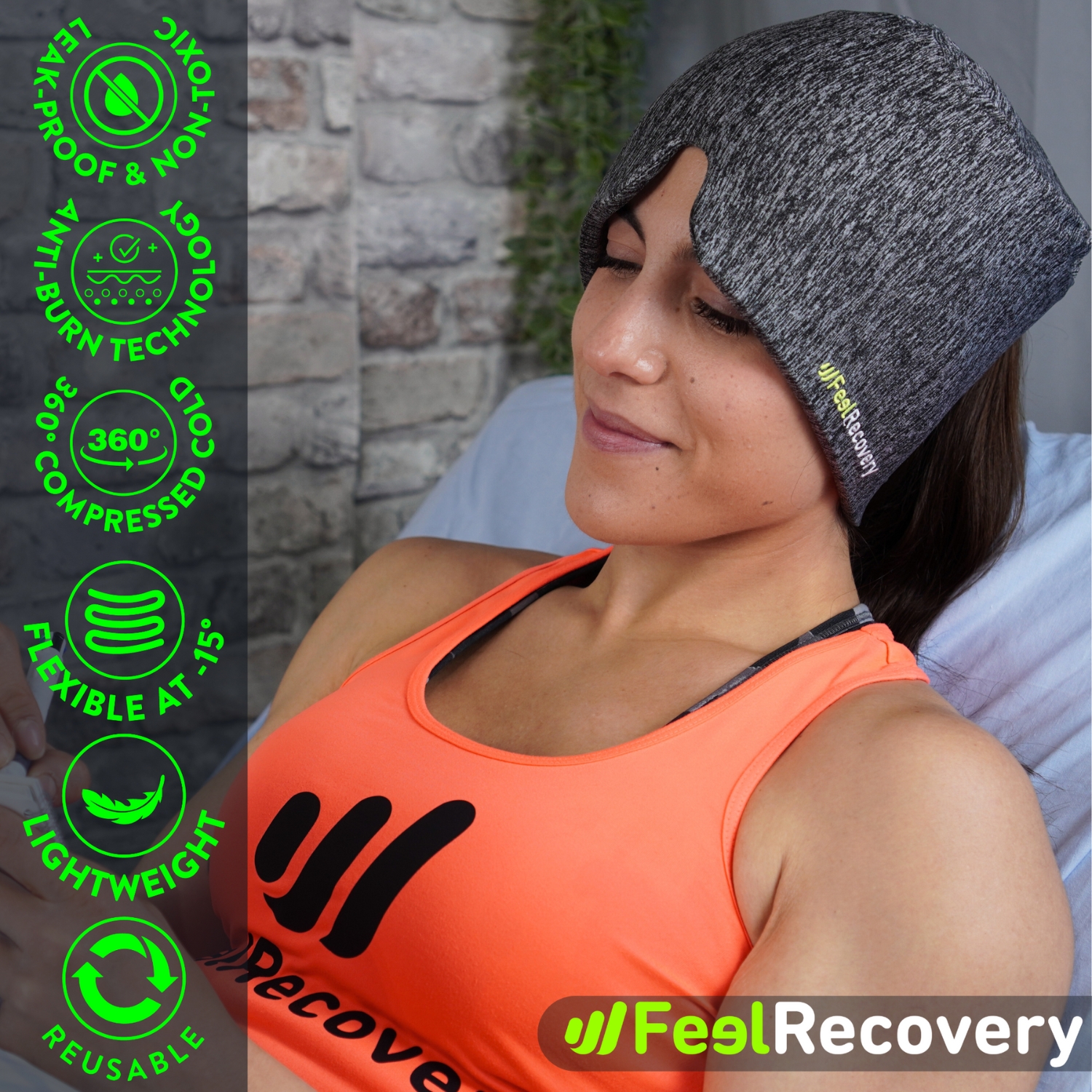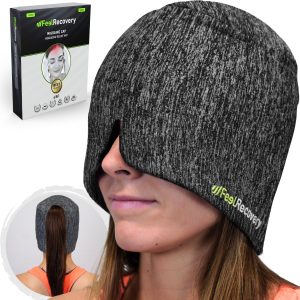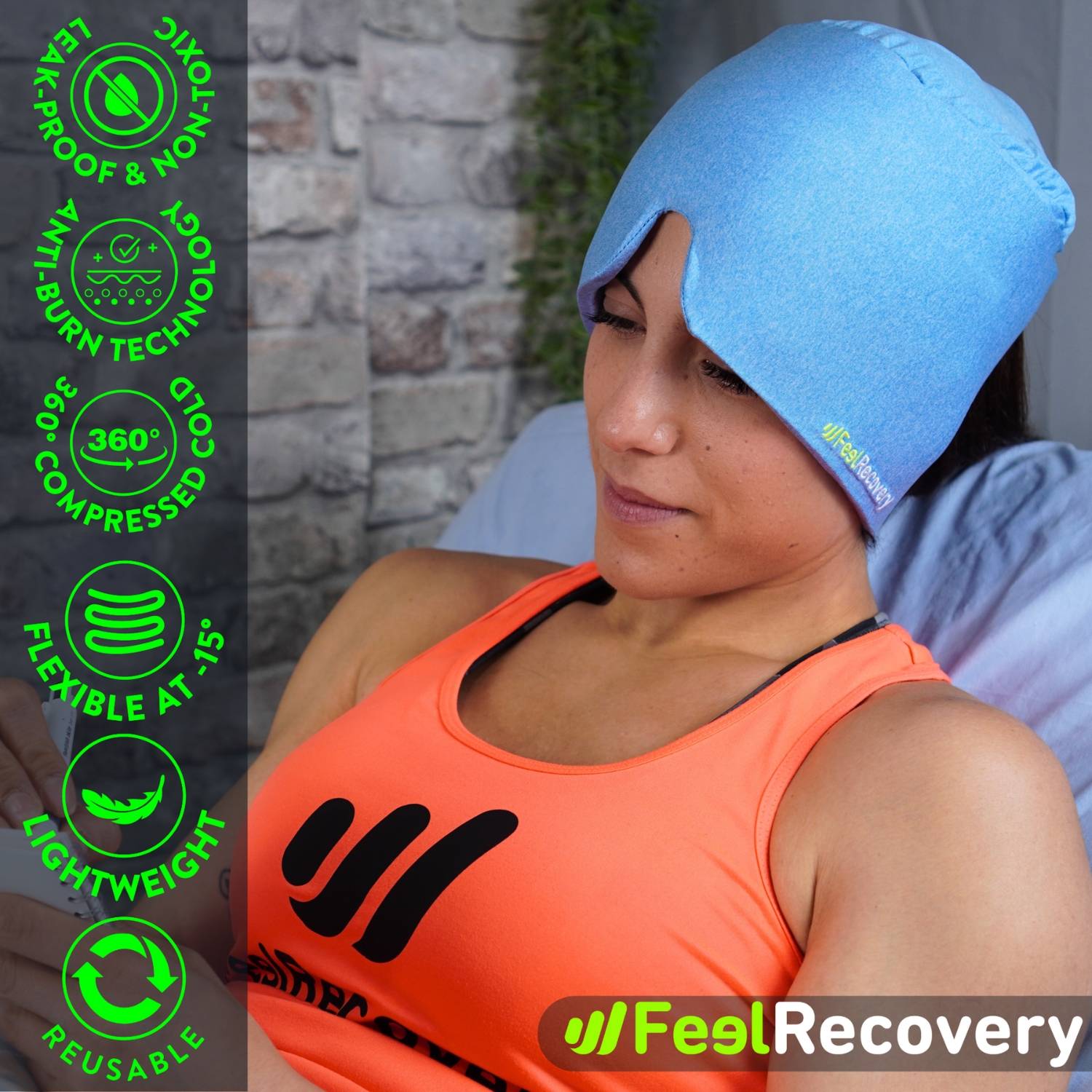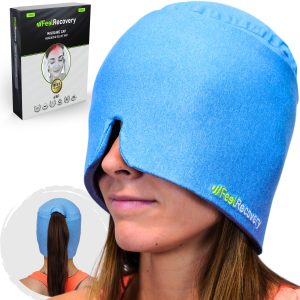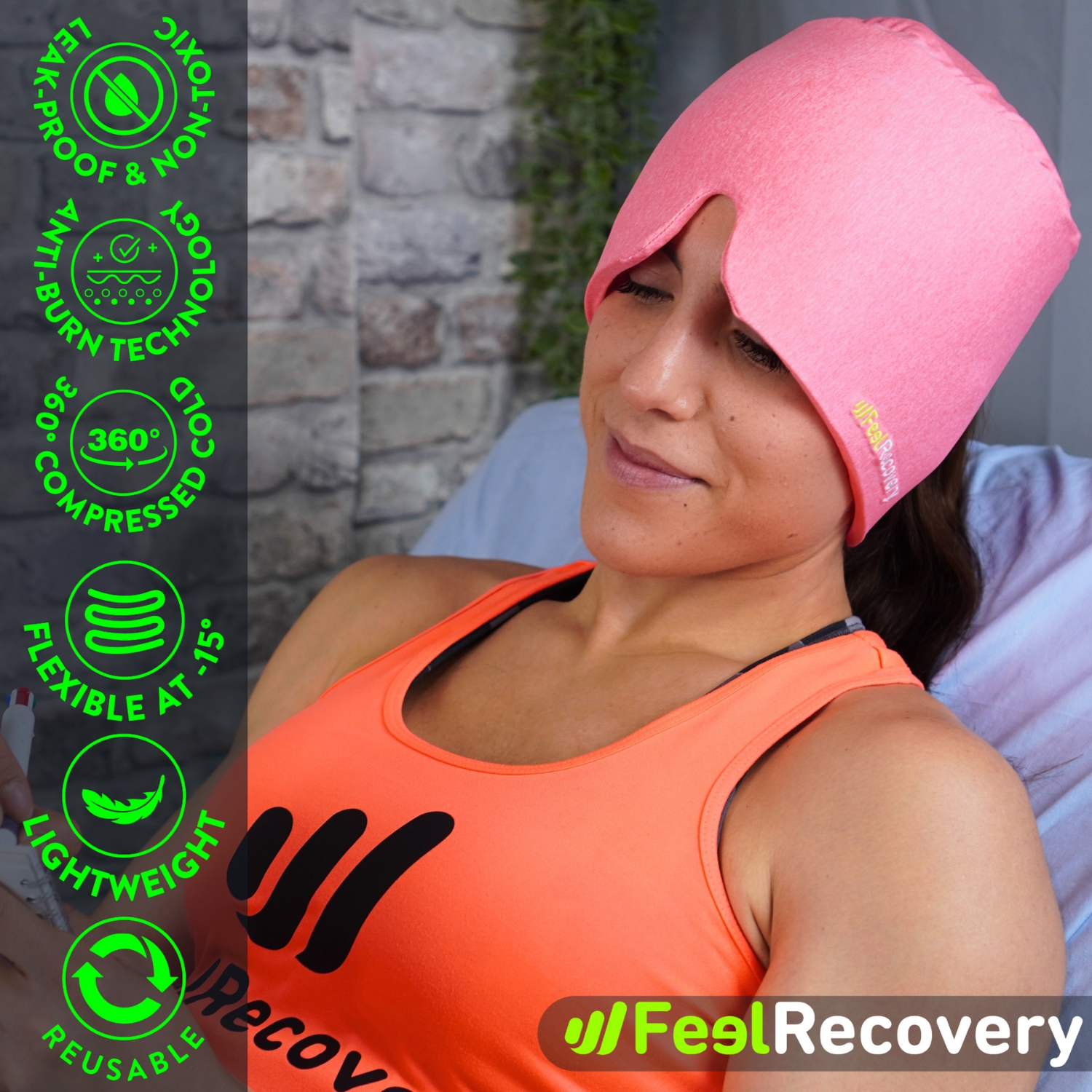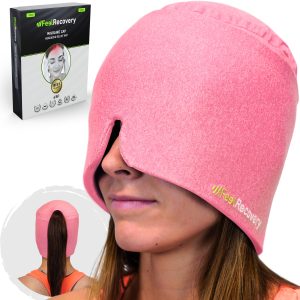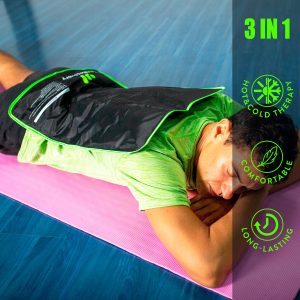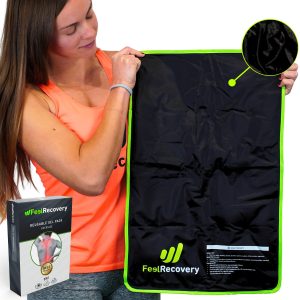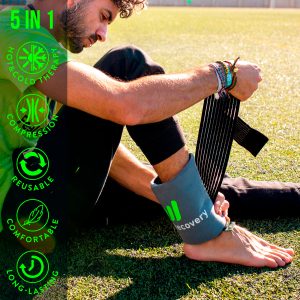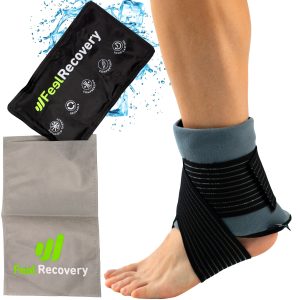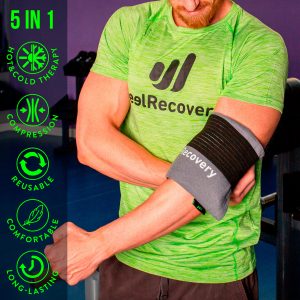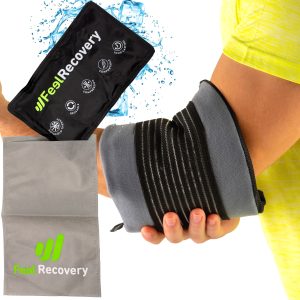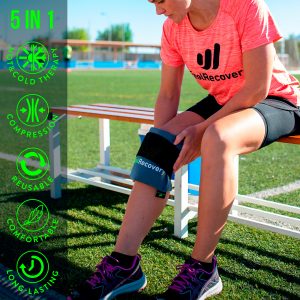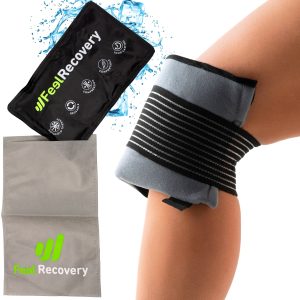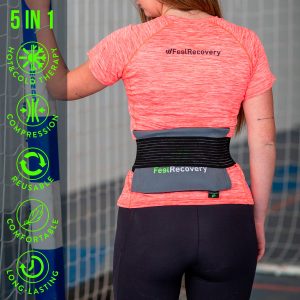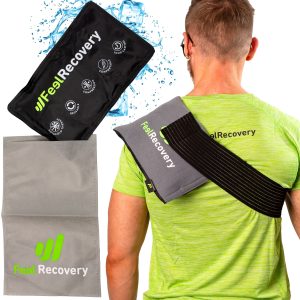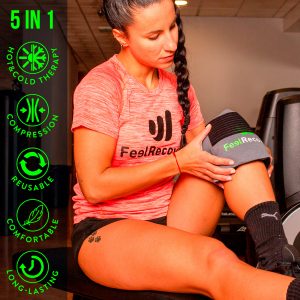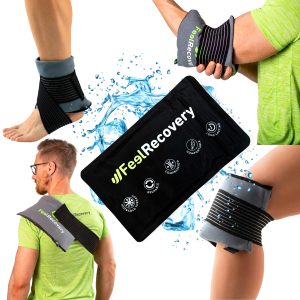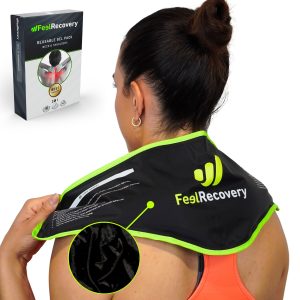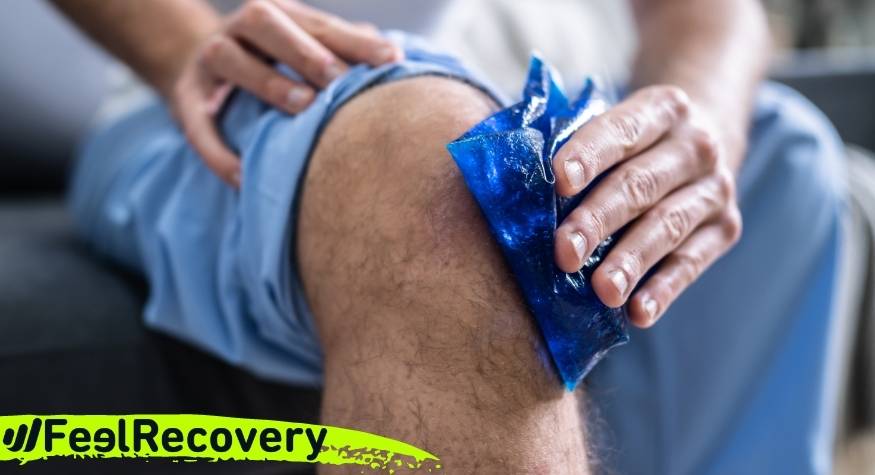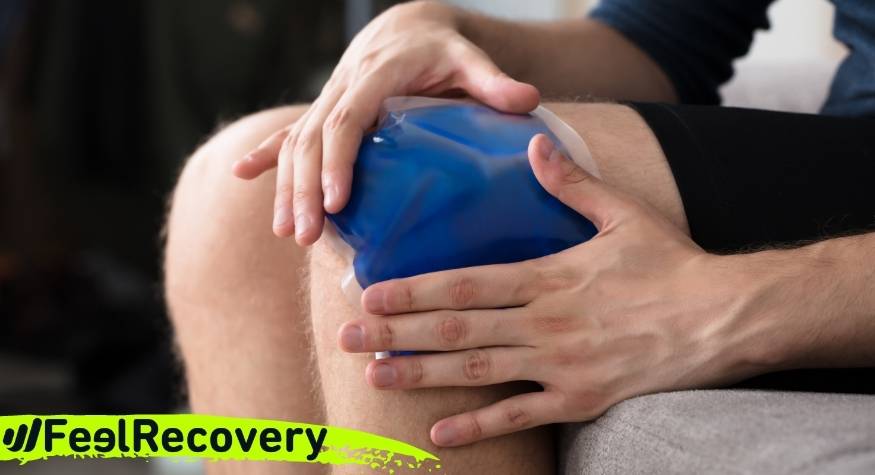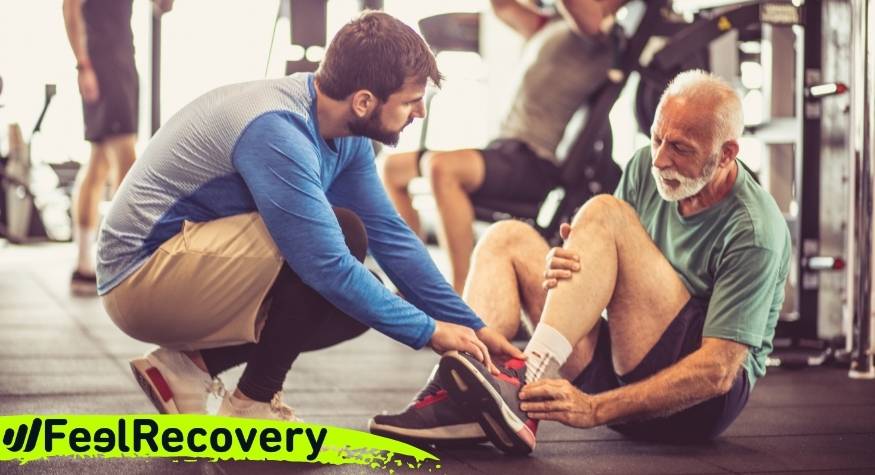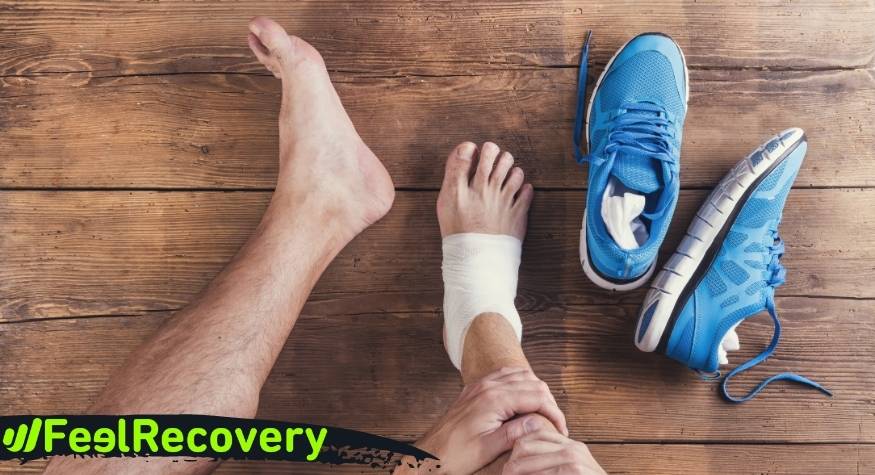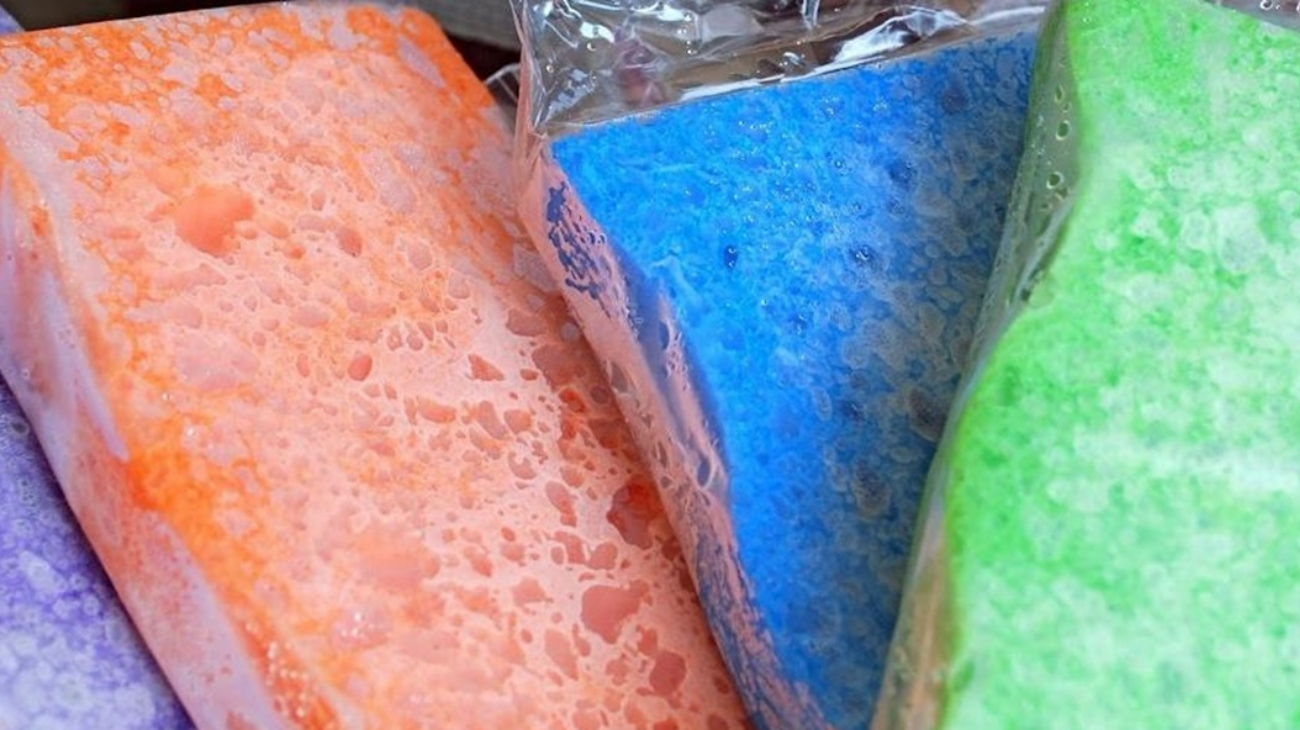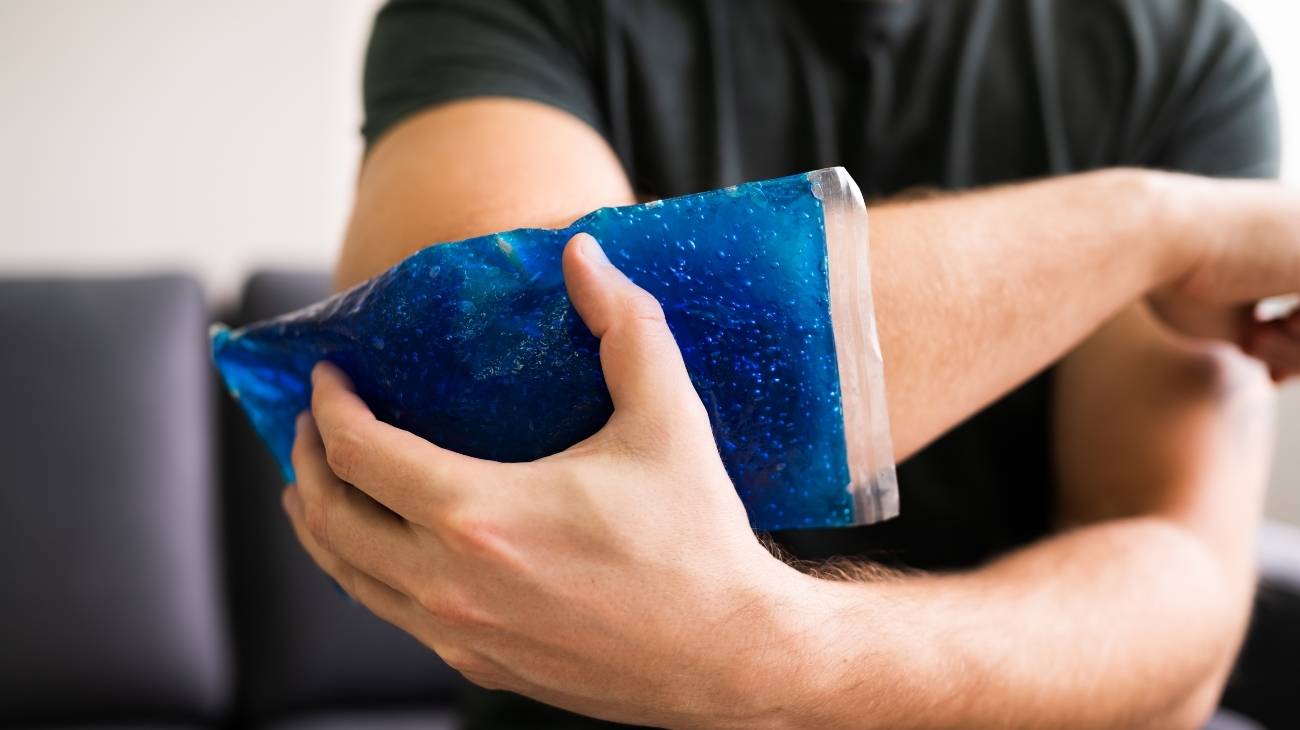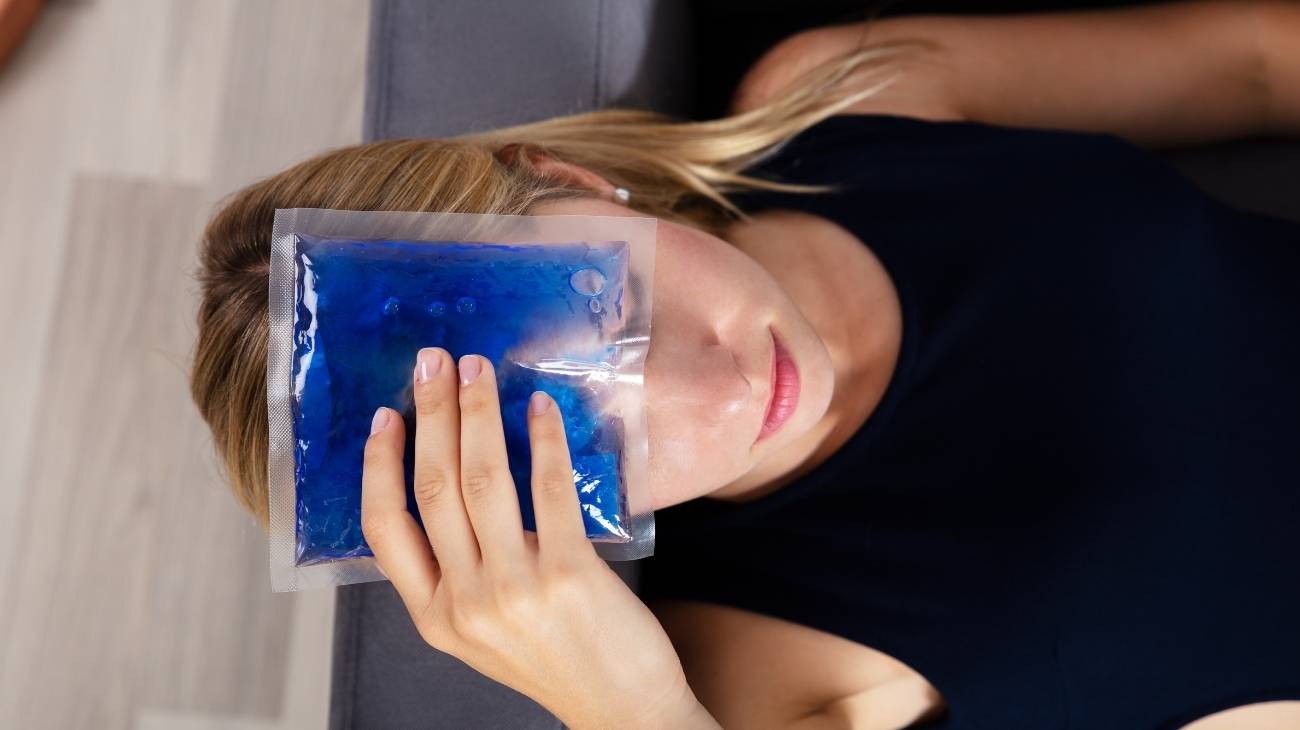Gel packs are a highly recommended option by medical specialists and sports coaches for heat or cold therapy. All this, thanks to its properties to reduce muscle pain, inflammation, swelling, among others, caused by injuries.
However, some people still wonder how to safely use gel packs for heat or cold therapy. If you are one of them, you are in the right place to clear up all your doubts on this subject. Let's get started!
Health benefits of heat and cold therapy
Did you know that heat therapy can improve blood flow and help muscles relax, while cold therapy can reduce inflammation and numb pain? According to Medical News Today, heat treatment promotes blood flow and helps muscles relax, making it beneficial for muscle pain or stiffness. On the other hand, cold treatment reduces inflammation by decreasing blood flow, which is helpful for acute injuries.
Using hot and cold therapies promotes movement of the joints in an improved range. Therefore, they are very beneficial in treating pain and inflammation, helping to heal the injury.
However, there are other benefits worth knowing on a case-by-case basis, and the following list tells you about them:
- The cold helps to reduce inflammation by decreasing blood flow.
- Cold therapy reduces tissue damage and inflammation.
- Also, it acts as a local analgesic, numbing the painful tissues.
- Cryotherapy is used by health specialists and trainers to induce vasoconstriction. As a pro, it will reduce muscle spasms, pain, inflammation, metabolic rate and circulation.
- Heat therapy is implemented to increase circulation, making the connective tissue more flexible.
- Thermotherapy reduces joint stiffness, muscle spasms and pain.
- Inflammation and congestion of tissues are reduced and improved with heat therapy.
- In the case of chronic pain, heat helps to relax the muscles by promoting blood flow.
- Muscle pain caused by intense physical activity is reduced by alternating cold and heat.
- Alternating cold and heat will be beneficial for injuries that prevent aerobic activity.
- Athletes who need to recover from an injury or pain may improve with contrast therapy. The effects are reflected in reduced pain, inflammation, swelling.
- Contrast therapies improve muscle strains, as long as they are mild. They also improve alertness and increase heart rate.
- Heat and cold therapies promote faster recovery after exercise, increase energy and elevate mood.
Bestseller
-
Gel Eye Mask for Puffy Eyes (Gold/Black)
$11.95 -
Gel Eye Mask for Puffy Eyes (Orange/Pink)
$11.95 -
Gel Eye Mask for Puffy Eyes (Purple/Turquoise)
$11.95 -
Ice Pack for Foot - Cold Therapy Socks (Black)
$24.95 -
Ice Pack for Foot - Cold Therapy Socks (Green)
$24.95 -
Ice Pack for Foot - Cold Therapy Socks (Pink)
$24.95 -
Migraine Relief Cap 360º (Black)
$24.95 -
Migraine Relief Cap 360º (Blue)
$24.95 -
Migraine Relief Cap 360º (Pink)
$24.95
When to use hot or cold gel packs for pain and injuries
When in doubt about which therapy to use, whether it is hot or cold, the answer will depend on the type of injury. Also, considering the general rules applied according to the benefits that each temperature brings. In the next segment we want to tell you when to use hot or cold gel packs, according to the type of injury or pain. Let's see:
When to apply cold?
Cold therapy contributes to the injury healing process while reducing pain and discomfort. This is possible because it reduces the metabolic processes that generate cell death in the injured area.
Based on the RICE (Rest, Cold, Compression and Lifting) method, cold gel apck therapies are very effective in treating injuries. However, to reduce swelling there must be a combination of cold and compression.
For all this and more, it is important that you know in which other situations the use of cold gel packs is convenient:
- As a first emergency in case of trauma, before 72 hours after the injury.
- If there is swelling or fever.
- Immediately after an exercise routine
- To treat acute injuries and recent wounds.
- In case of fractures, sprain or strain.
- To treat Osteoarthritis, Arthroplasties, Endoprosthesis, Tendinitis and Migraines.
- As therapy in post-operative periods, especially in surgeries associated with extremities and maxillofacial.
- To reduce hypertonia.
- In case of spasms, stiffness and muscle cramps.
- To treat minor or superficial burns.
When to apply heat?
Applying heat to injuries is very effective in relieving pain and tension as it relaxes the tissue. However, it is necessary that the initial stages of healing have been completed.
In sports medicine, heat therapy is combined with exercise for a faster and more effective recovery. Therefore, it is used to promote the range of motion of the injured area, allowing an even faster recovery.
Below, we will tell you what other injuries or types of pain you can use hot gel packs for:
- If the injury is more than 72 hours old or is an insidious injury, heat therapy will be very beneficial.
- It contributes to the recovery of joints and muscles.
- It is very effective if indicated in the medium term, especially in chronic pain or recurrent discomfort.
- To relieve cramps, spasms and muscle stiffness, provided there is no injury.
- In case of pain caused by drugs, menstrual pain, overexertion, pulling or fibromyalgia.
- To treat arthritis and lack of sleep.
- As an analgesic and decontractor.
- To contribute to the healing of the lesion, as heat increases the elasticity of the tissues.
- As an ideal complement to rehabilitation exercises.
When to apply cold/hot contrast?
Contrast therapy consists of putting the body in contact with heat for a few minutes so that vasodilation takes place. In this process, the blood flow from and to the extremities is increased. Then, the body area is changed to a very cold temperature for a couple of minutes to induce vasoconstriction. Thanks to this, the blood flow is slowed down and circulation is promoted locally.
Alternating between heat and cold on a muscular level will generate pumping as it occurs during light aerobic activity. It is very effective in injuries that prevent the individual from physical activity.
We will then tell you what other cases you can use hot/cold contrast therapies for:
- To remove metabolic waste from the bloodstream and muscles.
- Effective in reducing induced muscle damage (IDME) and preventing delayed-onset muscle pain (DOMS)
- As pain or injury recovery therapy.
- Very effective in reducing swelling and inflammation.
- To improve mild muscle strains and circulation.
- As a quick and effective recovery from pain following a heavy exercise routine.
- To increase heart rate, energy and mood.
Safe use of gel ice packs for hot and cold therapy
Did you know that applying a cold gel pack directly to your skin can cause frostbite or skin damage? To prevent this, always wrap the gel pack in a cloth or towel before application. Healthline advises that direct contact with frozen items can harm the skin and underlying tissues.
Enjoying an effective hot or cold session and without risk is possible using gel-filled bags. However, this will depend on the correct performance of the product. If you don't have any ideas on how to do it, don't worry, below we will give you some effective recommendations for each case:
cold use
Before using cold gel packs, it is important to consider the following recommendations:
- Place the product in the freezer or refrigerator for at least 2 hours to obtain the best results.
- Then, you should test the temperature to touch to see if it is the right one, or leave it longer if necessary.
- If it is too cold, wait a few minutes outside the freezer before using it.
- It is not necessary to use cloth cloths for placement, as our products come with a soft cloth cover to the touch. This guarantees a pleasant and satisfying experience for the user. However, this will depend on the manufacturer, as some gel packs do require a cloth to be placed on the skin.
- The therapy is indicated for placing the cold gel packs on the affected area for a maximum of 30 minutes at a time.
- This time should never be exceeded.
- Combine cold therapy with lifting.
- Once the time indicated by the specialist has elapsed, the product should be returned to the freezer for 30 minutes before using it again.
- During the therapy the skin in the injured area must be monitored every 5 minutes. In case of discoloration or redness, use should be discontinued immediately.
- For a single treatment, this cycle should be repeated 2 to 3 times, and several times a day to obtain effective results in terms of pain and swelling. However, this process must be indicated by a specialist.
Hot use
Our gel packs are not as recommended for heat therapy. However, for hot use by heating in a microwave you should follow these guidelines:
- Heat the gel ice pack for 30 seconds in the 800W microwave. If the microwave does not have this power, you must adjust the times before you achieve the appropriate one.
- Remove and check the temperature to the touch of your skin.
- Then, massage the gel with your hands to distribute the heat evenly.
- If it is not hot enough, you should heat it up for 10 more seconds in the microwave.
- If the temperature has been exceeded, you should let it cool down before reheating. Once it is at room temperature you can repeat the process described above.
- The gel packs must always be at room temperature to be heated in the microwave. Never do this when it is frozen.
- Only microwave the gel pack, never put the cover or cloth wrap on.
- Supervise the heating process of the gel pack. If you notice any swelling during the process, stop immediately and wait for it to go down before reheating. This means that the package is overheated.
- Never sit or lean on the gel pack, as this could cause it to leak or break. If it does, let it cool down before removing it and then discard it.
- Do not use in ovens.
In case of heating in hot water we recommend you follow these instructions:
- Boil approximately 3.5 litres of water.
- Remove the water from the fire.
- Soak the gel ice packs for 5 to 7 minutes. Never place the product while the water is on the stove.
- Remove from the hot water using non-sharp kitchen tongs.
- Towel dry the gel pack.
- Make sure there are no breaks or leaks. If there are any, you should dispose of them immediately.
- Check the temperature by touch to make sure it is tolerable. If it has been overheated, you should let it cool down for a couple of minutes before applying it.
- Place it in its case before being used on the injury.
Best timing for cold, heat, or contrast therapy in injuries
Hot or cold gel packs are part of a therapy to reduce inflammation in any part of the body. As we have already mentioned, both temperatures help to improve the symptoms of inflammation in muscular injuries or pain.
There are acute and chronic injuries, so according to the type of injury will depend on the use of cold, heat or a contrast of both. Therefore, before using either of these temperatures we must know their mechanism of action in the body.
To dispel your concerns we will explain the ideal moment to apply the cold or heat gel packs:
When is it better to apply cold?
Cold packs are indicated for acute musculoskeletal injuries resulting from a blow, sprain or muscle strain. It is extremely important that they are applied during the first 48 hours after the injury. The cold has an anti-inflammatory mechanism of action, because it contributes to reducing pain and increasing volume in the affected area.
Applying cold immediately after the injury has a vasoconstriction effect and consequently a decrease in blood flow. This causes in the affected area greater control of inflammation, less damage to adjacent tissues and considerable improvement of pain. That is why, when any injury occurs where cold is immediately applied, no bruising occurs.
Also, it can be used in the following situations:
- Minor burns: The first 48 hours of a first-degree burn are crucial to avoid the appearance of skin complications. Cold is a powerful vasoconstrictor that improves pain, tissue damage, oedema formation and prevents blistering.
- Migraines and headaches: Cold temperatures are very useful to decrease the intensity of pain because they have an analgesic action.
- Muscle pains from intense training: The cold causes a relaxation effect in the muscle fibres and is therefore ideal for improving pain and flexibility.
- Reddening of the skin: When cold is applied to a reddened area of the skin, a better venous and lymphatic return is generated which improves the appearance of the skin.
- Blows, traumas or sprains: Any musculoskeletal injury will always cause damage at the level of muscle fibres and consequently inflammation and pain. Placing cold generates two beneficial effects, the relaxation of the muscle fibres and vasoconstriction to avoid oedema and inflammation.
When is it better to apply heat?
Heat is an excellent controller of muscle spasms and is ideal for non-traumatic musculoskeletal inflammations. It is therefore very effective for injuries that cause inflammation and chronic pain.
Applying heat to conditions at the level of muscles and ligaments helps to restore elasticity and flexibility. The high temperatures of the heat induce vasodilation which generates greater blood flow. In this way, there is a greater distribution of nutrients and oxygen to the damaged tissues.
This is why it is the ideal non-pharmacological treatment to restore mobility to the affected area. It is widely used in cases of:
- Chronic diseases such as arthritis and arthrosis of the knee: These pathologies generate an inflammation in the joints that produce a lot of pain and limitation of movements. Heat therapies are very useful to improve the pressure on the joints and therefore the pain.
- Low back pain, tension and muscular pain: Heat compresses considerably relieve sensitivity and continuous pain. The heat improves the blood flow in the tissues and therefore there is more oxygenation and nutrition in the affected area.
- Improved flexibility and mobility: In case of stiffness and tension of ligaments and tendons the heat and better relaxation. Although the cold contributes to improve considerably, the effect of heat is usually more durable. It is useful in tired feet, sciatica, stiffness of the neck, neck and back spasms, lumbago and cervical pain.
When is it better to alternate hot and cold?
Although hot and cold temperatures have their great health benefits, alternating them can be very useful. This therapy of contrasting hot and cold temperatures produces a vasoconstriction and vasodilation that stimulates blood circulation.
This increased blood flow causes a purification of the affected tissues so there is a decrease in inflammation, stiffness and pain. This type of non-pharmacological treatment is used when the injury is chronic and the cold or heat have not worked individually.
Therefore, they are very useful in the rehabilitation of sports injuries, circulatory problems, lumbar and cervical pain. Furthermore, it is a treatment with fewer side effects, very accessible and much more economical.
How to use heat or cold gel packs to reduce inflammation?
Did you know that gel packs can be used for both cold and heat therapy, but it's essential to follow proper heating instructions to avoid burns? Heating the gel pack in the microwave for one minute, then checking the temperature and kneading the pack to distribute heat evenly. If additional heating is needed, do so in 30-second increments. Always wrap the heated gel pack in a cloth before applying it to your skin.
Gel-filled bags for cold or heat must be used correctly to guarantee the desired effect. The process of cooling or heating is very simple, but if you have no idea how to do it pay attention to these steps:
Use in cold
Follow the recommendations below for using cold gel packs:
- Place in the freezer or refrigerator: Gel packs should be placed in the freezer or refrigerator for at least 2 hours to ensure optimal results.
- Test the temperature: The temperature should be tested by hand to see if it is suitable to the touch. If it is not, it should be left in the freezer longer.
- Wait if it is too cold: If it is too cold, it is better to wait a few minutes outside the freezer before using it.
- Place directly on the affected area: Our gel packs can be placed directly on the area. They do not require a cover or cloth for application, some models even have a soft fabric on one side. However, other brands of gel packs require protection with a skin cloth.
- Do not exceed the exposure time: This therapy is especially indicated for exposure times of no more than 30 minutes. Under no circumstances should this time be extended to avoid damage or burns to the skin.
- Always elevate: Cryotherapy should always be combined with elevation of the affected area to improve inflammation and oedema.
- Cooling down again: After the exposure time is over, the gel pad should be returned to the freezer to be used again.
- Monitoring the skin of the area: It is necessary to evaluate every 5 minutes the skin of the affected area to avoid any damage. In case of discoloration or redness, its use should be immediately suspended.
- Repeat several times a day: A good cryotherapy treatment should include several cycles of exposure during the day, it is not enough to just apply it once. This guarantees good results for swelling and pain. Always remember that any cryotherapy treatment must be supervised by a specialist.
Use in Hot
If you require the use of thermotherapy it is important to know that our packs are not recommended to be used in hot weather. However, they allow for easy heating using a microwave.
For this process follow the following recommendations:
- Heat the pad: Use a microwave and set it at 800W for 30 seconds. If you can't do it with that power, heat it up little by little until you reach the right temperature.
- Checking the temperature: After the time has passed, remove the pad from the microwave and check to see if it is hot.
- Massage the gel: It is necessary that all the gel content of the pack is heated homogeneously. It is therefore important that it is massaged and there is a better distribution of heat. If it is not completely warm, let it cool down to temperature and heat it up again.
- Heat again: If you do not find the correct temperature you can heat again for 10 seconds.
- Temperature exceeded: In case the temperature of the gel pack is overheated you should leave it outside the microwave. Also, you should wait for it to cool down to room temperature before starting the heating process.
- Never heat frozen: Gel packs should always be heated at room temperature, never if they are frozen.
- Supervise the heating: If you observe a dilation of the pad, stop the heating process immediately. They usually occur when there is an excess of temperature. Wait for it to cool down before reheating it.
- Never sit or lean on the pack: Remember that gel packs are made of a material that does not support excess pressure. When someone leans or sits on the pack, the gel may break or leak. If this happens, wait for it to cool down before throwing it away.
- Do not heat in ovens: Our gel packs are not prepared to be heated in an oven, as they could suffer damage to their structure.
If you do not have a microwave at home you can use this alternative method by following these simple steps:
- Heat the water: Bring 3.5 litres of water to the boil on the cooker.
- Immerse the pad: Remove the boiled water from the cooker and place the gel pack for approximately 5 to 7 minutes. Never put the pack in the water while it is boiling on the cooker.
- Remove from water: Use blunt tweezers to avoid damaging the packaging. Then dry the gel pack with a towel or cloth.
- Check for breaks: Check for gel leaks and if there are any, dispose of them immediately.
- Check the temperature to touch: Use your hands to make sure it is the right temperature. If it is very hot, wait a few minutes to place it on the affected area.
- Use a cover: When placing it in the affected area, place the gel pack in a cover or wrap it in a cloth.

